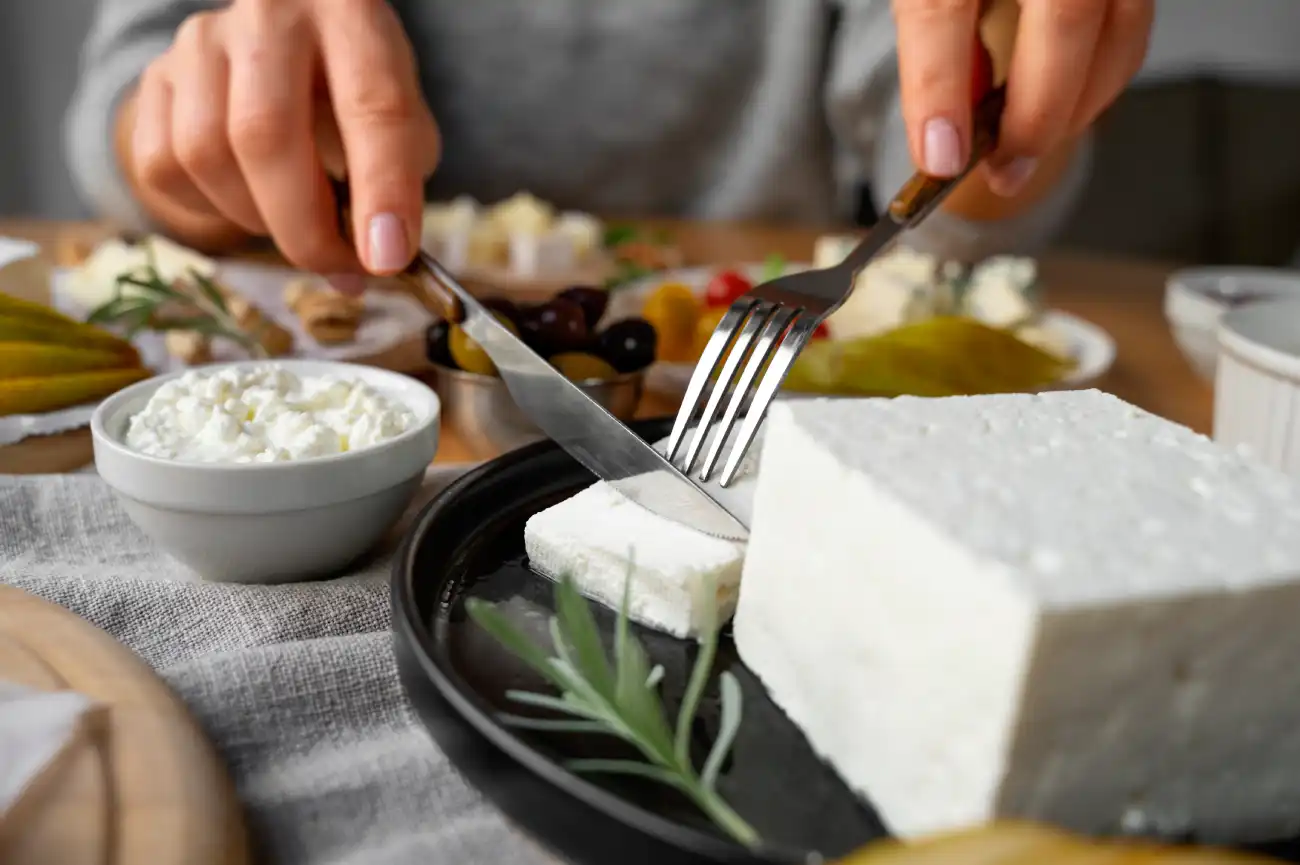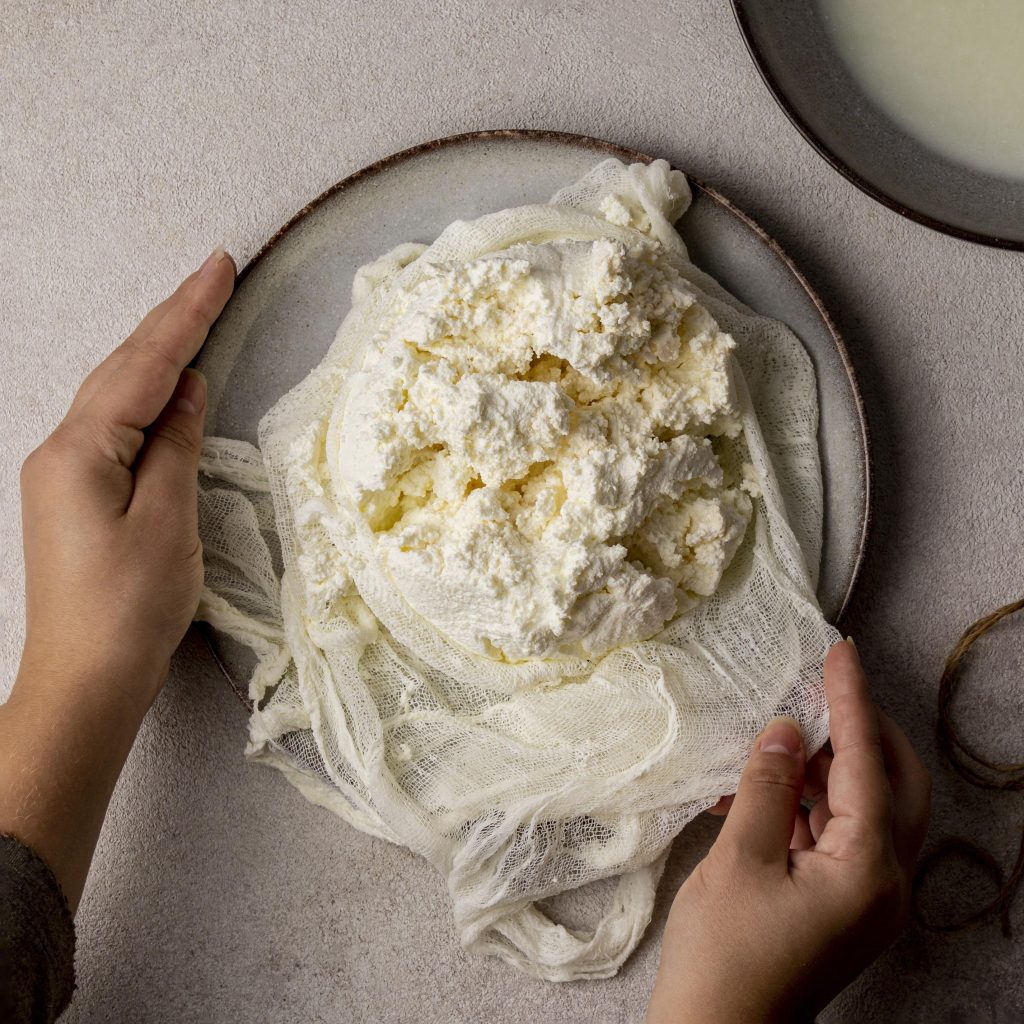Ricotta cheese, with its creamy texture and mild flavor, is a staple in many Italian dishes. But what happens when you have some leftover? Instead of letting it go to waste, there are numerous creative ways to use leftover ricotta.
The Versatility of Ricotta
Ricotta cheese is not just for traditional dishes. Its mild flavor and creamy consistency make it suitable for a range of recipes, from breakfast to dessert. For instance, have you ever tried a ricotta-based dessert or used it as a topping for your morning toast? If you’re new to ricotta, you might want to check out our Ultimate Guide to Whole Milk Ricotta.
Creative Uses for Leftover Ricotta
Breakfast Delights :
- Toast Toppings: Starting the day with ricotta can be a delightful experience. Spread it on toast and top with ingredients like honey and berries, or avocado and cherry tomatoes for a savory twist. The creaminess of ricotta provides a perfect contrast to the crispness of toasted bread.
- Pancakes and Waffles: Incorporating ricotta into pancake or waffle batter results in an incredibly fluffy and moist texture. It adds a richness that pairs wonderfully with maple syrup and fresh fruits. Find more pancake recipes.
- Scrambled Eggs and Omelets: Adding a spoonful of ricotta to scrambled eggs or omelets makes them extra creamy and luxurious. It’s a simple way to elevate your regular breakfast fare.
Savory Dishes :
- Ricotta and Herb Spread: Perfect for spreading on toast or as a dip for veggies. Explore other spread recipes.
- Ricotta Stuffed Peppers: Fill bell peppers with a mixture of ricotta, cooked quinoa, and herbs, then bake until tender.
Desserts to Savor :
- Cheesecakes and Tarts: Ricotta is excellent in cheesecakes, offering a lighter alternative to cream cheese. Its grainy texture and less pronounced sweetness make for a unique and delightful dessert.
- Cannoli Filling: Perhaps the most famous ricotta dessert, cannoli involves filling crispy pastry shells with a sweetened ricotta mixture, often enhanced with chocolate chips, pistachios, or candied fruit.
- Baked Goods and Pastries: Ricotta can be used in baking, from moist ricotta cakes to sweet breads and muffins. It adds moisture and a subtle richness to baked goods.
If you’re looking for a main course dish that prominently features ricotta, our Ricotta Bake Recipe is a must-try.
Storing Leftover Ricotta
Refrigerating Leftover Ricotta :
- Airtight Container: Transfer the leftover ricotta into an airtight container. This step is essential to prevent the cheese from absorbing odors and flavors from other foods in the refrigerator. It also helps to retain moisture, preventing the ricotta from drying out.
- Temperature Considerations: Store the container in the coldest part of your refrigerator, typically at the back, where the temperature is more consistent. The ideal temperature for storing ricotta is between 35°F and 40°F.
- Shelf Life: When stored properly in the refrigerator, leftover ricotta can last for up to a week. Always check for signs of spoilage, like an off smell, mold, or a sour taste, before using.
Freezing Leftover Ricotta :
- Preparation for Freezing: If you’re not planning to use the leftover ricotta within a week, freezing is a viable option. However, it’s important to note that freezing can slightly alter the texture of ricotta, making it grainier. This change doesn’t affect its flavor or safety, but it might be more suitable for cooked dishes rather than fresh applications after thawing.
- Portioning: Consider dividing the ricotta into usable portions before freezing. This way, you can thaw exactly what you need for a recipe, reducing waste.
- Freezing Method: Place the portioned ricotta in airtight containers or heavy-duty freezer bags. If using bags, squeeze out as much air as possible before sealing to prevent freezer burn.
- Labeling and Storage: Label each container or bag with the date of freezing. Properly stored, frozen ricotta can last for up to two months in the freezer. Learn more about freezing dairy products here.
Thawing Frozen Ricotta :
- Refrigerator Thawing: The best way to thaw frozen ricotta is by transferring it to the refrigerator and allowing it to thaw slowly, usually overnight. This method helps maintain the texture as much as possible.
- Post-Thaw Texture: Once thawed, the ricotta’s texture might be slightly grainy. Stirring it vigorously or blending it can help improve the texture, making it smoother for your recipes.
- Usage After Thawing: Thawed ricotta works best in cooked dishes like lasagnas, bakes, or sauces, where the change in texture is less noticeable.
Additional Tips :
- Avoid Refreezing: Once you have thawed the ricotta, avoid refreezing it as this can further degrade the texture and potentially affect its quality.
- Safety Check: Always perform a quick safety check for any signs of spoilage before using thawed ricotta.
By following these storage guidelines, you can extend the shelf life of your leftover ricotta, ensuring that it remains fresh and safe for consumption. Proper storage not only helps in reducing food waste but also allows you to enjoy the versatility of ricotta in various recipes.
Ricotta in World Cuisine
Eastern European Cuisine :
- Pierogis: In Eastern Europe, particularly in countries like Poland and Ukraine, ricotta is often used as a filling in pierogis. These dumplings, which can be either boiled or fried, are traditionally stuffed with a mixture of ricotta and potatoes, creating a creamy and comforting filling.
- Cheese Blintzes: Another popular dish in Eastern European Jewish cuisine is the cheese blintz. Ricotta, sometimes mixed with other cheeses like farmer’s cheese, forms the heart of these sweet crepes, which are then pan-fried to a golden brown.
Indian Cuisine :
- Desserts: In Indian cuisine, ricotta serves as a substitute for traditional fresh cheese ingredients like paneer or chhena in desserts. It’s used in sweets such as Ras Malai, where ricotta patties are soaked in sweetened, cardamom-flavored milk, or in Sandesh, a Bengali sweet made by combining ricotta with sugar and cardamom.
- Savory Dishes: While less common, ricotta can also be found in savory Indian dishes, acting as a protein-rich addition to vegetarian meals, often mimicking the role of paneer.
American Cuisine :
- Baked Goods and Desserts: In the United States, ricotta is a popular choice in cheesecakes and as a filling for pastries and pies. Its texture lends a richness to baked goods, making them moist and flavorful.
- Breakfast Dishes: American breakfasts have embraced ricotta in pancakes and as a spread on bagels and toast, often paired with fruit or honey.
Mediterranean and Middle Eastern Cuisine :
- Greek Cooking: In Greece, ricotta is used in dishes similar to its Italian counterparts, such as in pastries like spanakopita, where it’s mixed with spinach and feta.
- Middle Eastern Dishes: In Middle Eastern cuisine, ricotta can be found in desserts like knafeh, where it’s used as a filling, adding a creamy texture to the sweet, cheese-based dessert.
Latin American Cuisine :
- Dulce de Leche and Ricotta Desserts: In parts of Latin America, ricotta is mixed with dulce de leche for a sweet spread or filling in desserts, combining the creamy texture of ricotta with the rich, caramelized flavor of dulce de leche.
- Savory Bakes: Similar to its Italian uses, ricotta is incorporated into savory baked dishes, often combined with local cheeses and ingredients.
Conclusion
Leftover ricotta doesn’t mean it’s the end of the road for this cheese. With a bit of creativity, you can transform it into delightful dishes that will leave you wanting more. So the next time you have some ricotta sitting in your fridge, remember the endless culinary possibilities it offers. For more culinary tips, check out this resource.



1 thought on “Leftover Ricotta: Creative Uses from Breakfast to Desser”